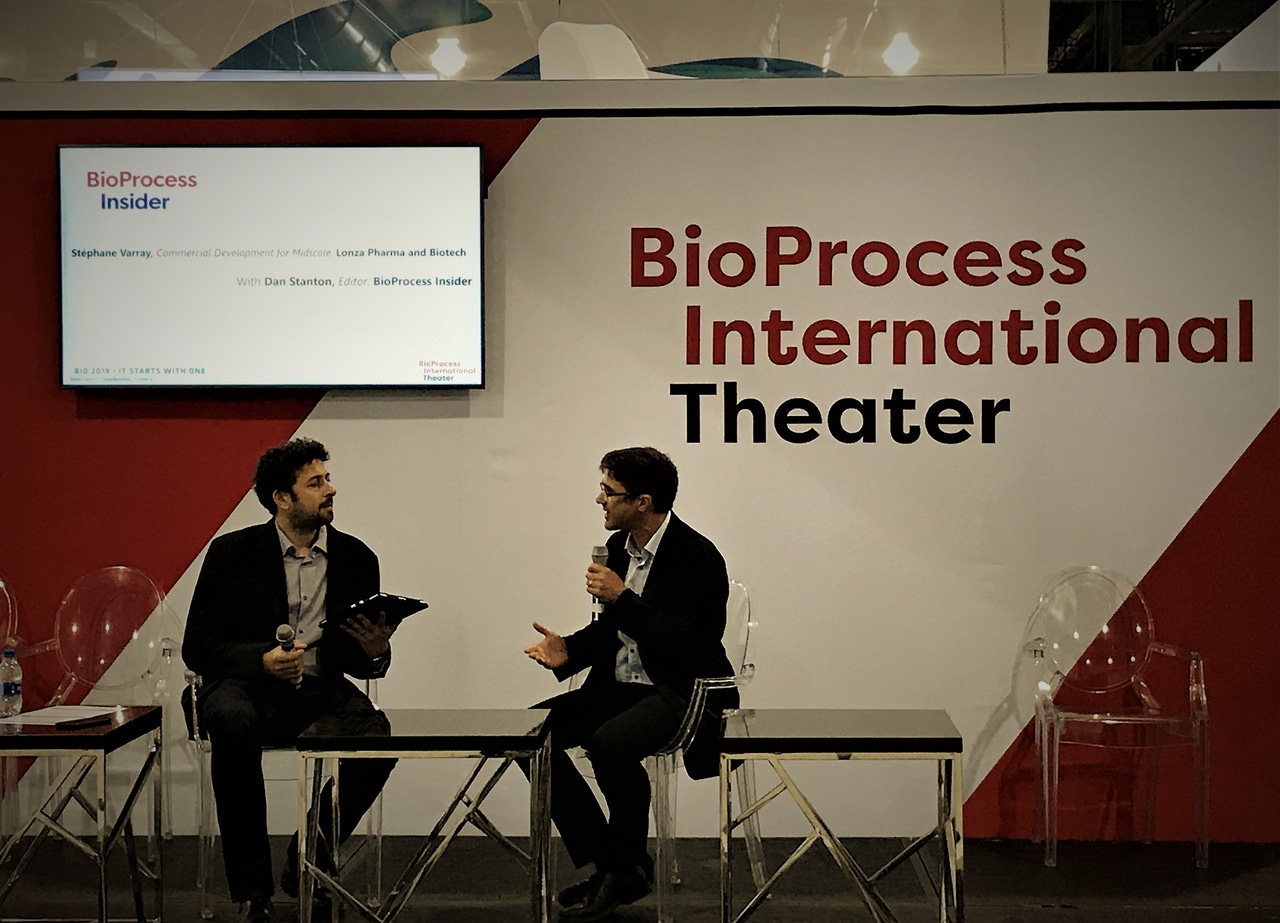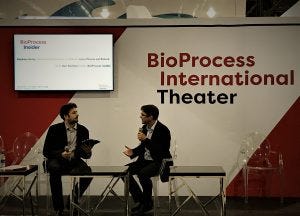Content Spotlight
Podcast: MilliporeSigma says education vital to creating unbreakable chain for sustainability
MilliporeSigma discusses the importance of people, education, and the benefits of embracing discomfort to bolster sustainability efforts.

With construction of a 6,000 L scale hybrid plant underway, CDMO Lonza says there is high demand among its customers for midscale biomanufacturing.
In this industry, companies and commentators like talking about extremes: either small-scale single-use or large-scale stainless steel. But speaking at the BPI Theater at BIO in Philadelphia earlier this month, Stéphane Varray, commercial development for midscale at Lonza Pharma and Biotech said midscale options provide firms with flexibility across numerous modalities.
“When we look at midscale we’re looking at 6,000 liters,” he said, adding the market growth for this service is being driven by similar trends seen in the more documented small-scale space.

Lonza’s Stéphane Varray spoke as part of the BPI Theater’s Insider Dailies at BIO
“We are seeing niche inclinations, smaller populations as well as [demand for] a faster path to the market. The other market trend that is really relevant is the better processes and high titers. Lastly, we’re seeing more potent molecules as well which are driving the quantity to lower scales, like the smaller and the mid scales.”
In May 2018, the contract development and manufacturing organization (CDMO) announced plans to build a new biomanufacturing facility at its Portsmouth, New Hampshire equipped with several 6,000 L stainless steel bioreactors for mammalian cell culture.
“It’s going to be operational starting from next year and we are really on track with construction. We will get the first clinical batches next year.”
The plant will use stainless steel bioreactors for production with single-use technologies implemented in the seed reactors. “That mean we can easily tech transfer from single-use technology from one of our sites around the globe, then go into the single-use and then jump into the stainless steel.”
Single-use technologies comprise the majority of the downstream,
Varray told Bioprocess Insider on the stage at BIO, that the plant uses stainless-steel in the upstream but single-use in the downstream, adding this hybrid model brings benefits in cost and speed.
“In the downstream process we have a lot of modularity, kind of a plug-and-play. The benefit is that you can leverage the best of the two worlds, relying on the platform and the best of processes with a lot of automation that make you faster into the manufacturing.
“We can drive the costs of goods down, and with all the implementation of electronic batch reports or online monitoring, we can learn a lot from the processes. As well, the modularity brings an element of complexity. We can cope with all the complexity moving forward on the different quality of format.”
Varray was quizzed on alternative methods of midscale production, specifically the multiplexing of 1,000 or 2,000 L single-use bioreactors offered by other CDMOs, such as AGC Bio.
He said it is not simply a choice of multiplexing or making more batches at a lower scale, but the option for both depending on the process and a customer’s forecast strategy.
“Already the customer at Phase II has to plan for the commercial scale already. There are some tipping points in all those parameters that makes midscale more preferable than a smaller scale,” he added.
“This is why you have to work very closely with the customer to identify when is the right moment to jump into a larger scale.”
You May Also Like